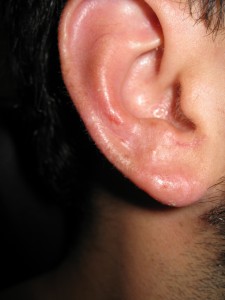
Reasons for Undertaking Otoplasty
Sometimes ear defects are present at birth but are not obvious due to the small size of the infant’s ears. Even when the defect is structurally related and interferes with hearing, it is often not apparent until the child is able to verbalize the problem or it is discovered through testing. Once the problem has been identified, surgery is sometimes necessary to correct it.
The most common reason for otoplasty, however, is the desire to improve appearance, because appearance can have such a profound effect on self-confidence and self-esteem. A malformed ear might require a procedure that involves creating a more natural shape. Those afflicted with the condition known as macrotia are born with excessively large ears that can be a source of ridicule or teasing, especially in younger people. The aim of otoplasty to correct aesthetic defects is to bring a better sense of proportion to the patient’s ears.
Post-Surgery Care
It is not unusual for some scarring to occur as the result of otoplasty procedures. While the scarring initially may be unsightly and painful, doctors recommend that the scars be left alone, aside from cleaning and dressing the wound, for a period of two to three weeks, in order to allow sufficient time for natural healing to take place. Once all open wounds and scabs have healed, scar cream can safely be applied. The most effective scar creams for this application include liquid oxygen, vitamins, silicone, and cortisone, and if administered regularly to the affected site, the scar should be reduced in size and visibility within a few weeks.
Keloid Scars
Keloid scars are those that result when the healing process happens more aggressively than is desirable; these scars often extend beyond the scope of the original surgical procedure. For this reason, they are often referred to as “scars that don’t know when to stop.” Unlike normal scars, keloid scars will not subside over time, and will require some kind of action to have them reduced. Since these are often unsightly scars, rising above the surrounding skin to a pink or purple crest, they generally present an unsightly appearance. Unfortunately, treatment of keloids can be difficult, particularly in cases where they are of the larger variety.
Cortisone injections or steroid injections often produce favorable results in the treatment of keloids, and are given once a month or every two months. Wearing a silicone sheet on the affected area has proven somewhat effective, but depending on the location of the scar, can be difficult to carry out in practice. Surgery to remove the keloid can be risky, because it may cause the formation of an even worse keloid. One of the most successful treatments of keloids has been found to be laser surgery, which frequently reduces the size and discoloration of the scar.
